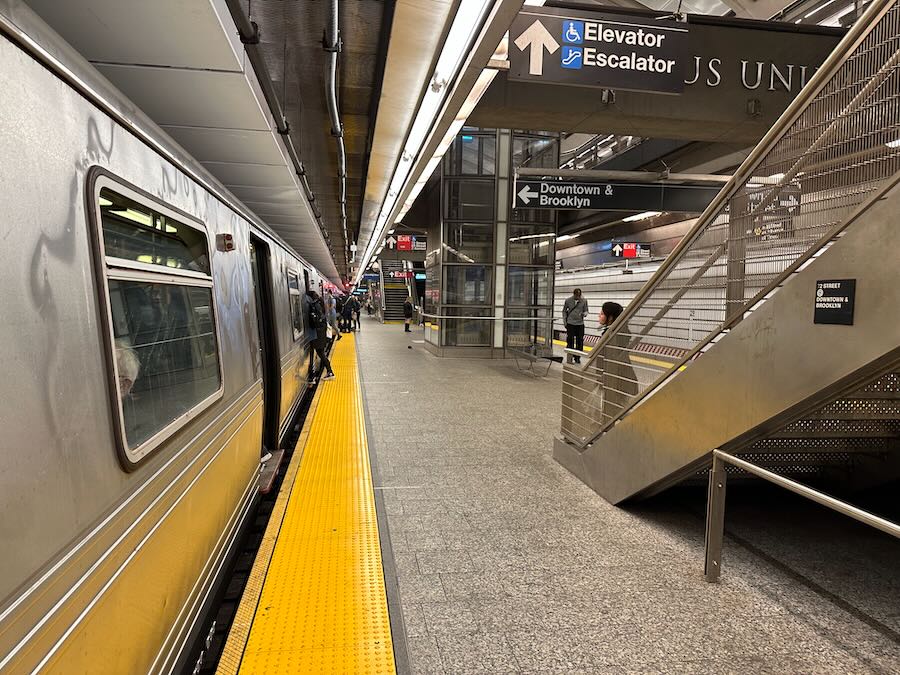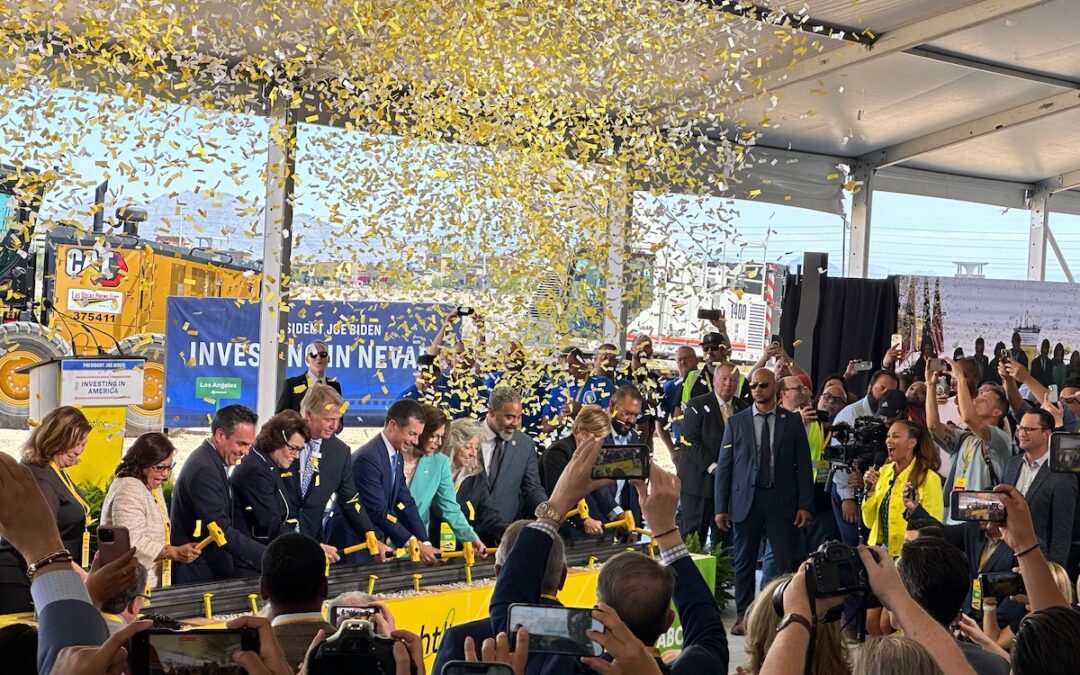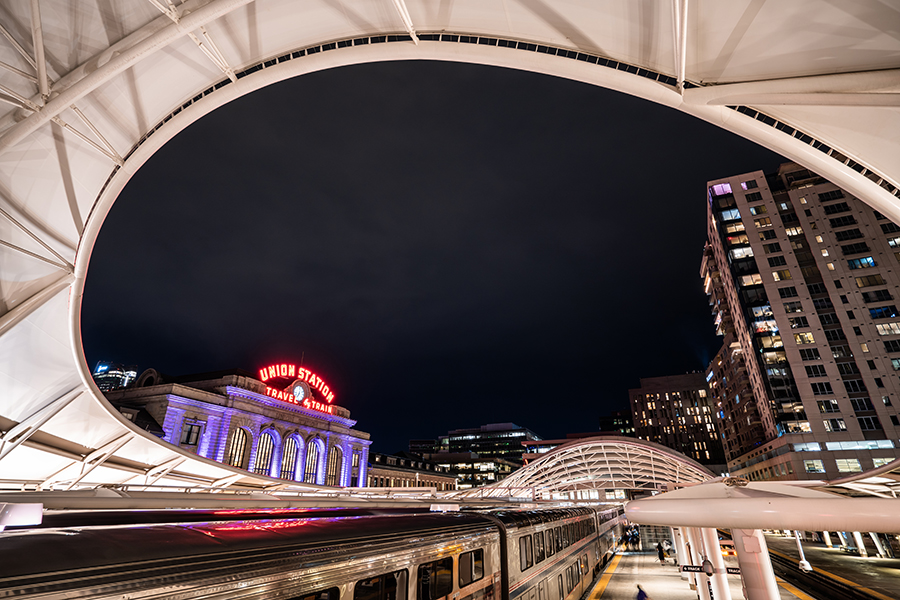The railroad Brightline today broke ground in Nevada on its new Brightline West project. Brightline will use trains traveling up to 200 miles per hour to cut the travel time between Las Vegas and Los Angeles in half. The company already operates successful trains...
Rapid rail projects cost more in the U.S. than nearly anywhere in the world, which is a big problem. It means we get far less infrastructure for our money than we should, for starters. It also gives opponents of transit and passenger-train projects a powerful tool to criticize and block them—even as they stay silent on the frequent delays and inflated costs for highway construction projects. In that realm, too, costs have skyrocketed in recent decades. The problem plagues every form of U.S. transportation.
There is no simple solution, but leaders who are passionate about bringing better train service to their cities and states are a great starting point. “We need to find champions within our government—very specifically, the ones who have the power to get people to do stuff,” said Eric Goldwyn of New York University during a recent Alliance webinar. “It’s going to be the governor and mayors. We really need to get those people involved.”
Goldwyn is an assistant professor and program director in the Transportation and Land-Use Program at New York University’s Marron Institute. He leads the Transit Costs Project, which has a globe-spanning staff of research contributors and maintains a database with information about construction costs in more than 50 countries.
Overall, the U.S. is the sixth most expensive country in the world to build transit infrastructure. But the ranking is even worse than it appears, according to a Project report, “because construction costs scale with the percentage of tunneled track, which is more expensive than building rail at grade. The five countries with greater average costs than the United States are building projects that are more than 65% tunneled. In the United States, on the other hand, only 37% of the total track length is tunneled.”
The Project recently published case studies that analyzed the cost of building transit projects in Boston, Istanbul, Italy, Sweden, and New York. In the case of New York City’s Second Avenue subway, the project cost 8 to 12 times more than the “composite baseline case” compiled from data on costs in several European countries. Per mile, the New York project cost $2.6 billion, which is high even by U.S. standards. For example, the Purple Line in Los Angeles cost $800 million per mile. By international standards, the New York price tag is stratospheric: A project in Madrid cost $320 million per mile, and one in Paris cost just $160 million per mile.
Digging into specific cases allowed the researchers to isolate several reasons for the disparities.
One factor is the inappropriate use of consultants in the U.S. “Oftentimes, what we’ve found is that consultants are brought on to answer the questions of, What do we need to be doing?” Goldwyn said in a recent interview with the publication Governing. “Rather than an agency telling the consultant what they need to be doing, the consultant starts to do stuff, and the agency is like, ‘Well, that’s not really what we want. We need you to go study this other thing.’ They’re billing you by the hour and those costs accumulate.”
Labor costs are a second driver of the high costs. The issue isn’t wages per se, since most European countries pay equivalent or higher wages for construction work. It’s more about the overall number of workers employed on projects, along with the deference to car culture in the U.S.—which not only slows down projects but leads to workers being paid for overtime and overnight shifts. “If you don’t let a lane or two of traffic be shut down so they can dig a big hole,” Goldwyn said, “that just means they’re going to dig it much more slowly, and they’re going to have to dig it at weird hours of the day, so it’s going to be much more expensive. If you just said, ‘Yeah it’s going to be annoying, but let’s just do it and get it over with,’ that would be, I would argue, a better way to go.”
The relative lack of standardization in U.S. projects is a third key factor. Countries with lower construction costs emphasize standardization and “really trying to economize as much as possible,” according to Goldwyn. “In the States, we have this tendency to customize and make everything bespoke,” he said in the Alliance webcast. “The issue is that if you’re designing everything as one-off, you don’t save any money in your design,” and you can’t apply the lessons learned—or the potential cost savings—moving forward.
A fourth factor is that there are so many stakeholders with their own agendas in the U.S. “One of the things that’s interesting in this research is how often government agencies or utility companies gum up these projects because they want something” in exchange for doing their job, Goldwyn said. “There’s all these opportunities for extraction, and there needs to be someone at a high enough power, like a mayor, who is saying, ‘Cut the crap. We need to get this done. . . . You can’t keep trying to extract more and more bribes from these megaprojects.’”
Together, these factors create a dysfunctional cycle. Delays and high construction costs lead the public to lose faith in agencies’ ability to build projects at a reasonable cost or in a timely manner. Which means fewer projects are actually approved and built. Which further deteriorates the agencies’ capacity and expertise.
All of which is why champions with the passion and pull to get things done are a great starting point for getting better transit infrastructure built—at a lower cost. As Goldwyn said, “It all comes down to having people at the top that are like, ‘It’s important that we build this thing in a cost-effective, speedy fashion.’ If you have a governor, mayor, head of agency who is laser-focused on that stuff, it solves all of these downstream problems.”
The Latest from HSRA
Our Latest Blog Posts
Check out the latest news, updates, and high speed rail insights from our blog!




